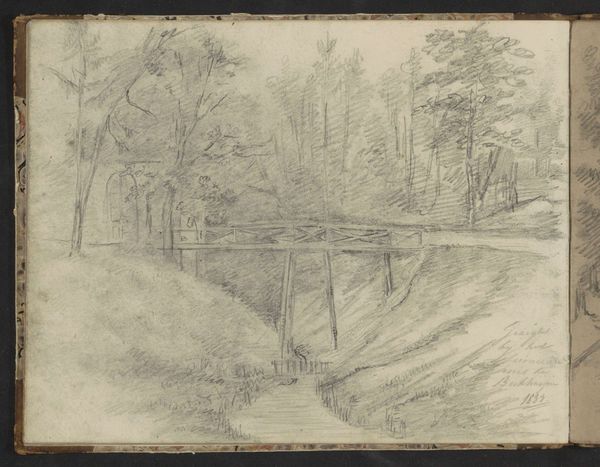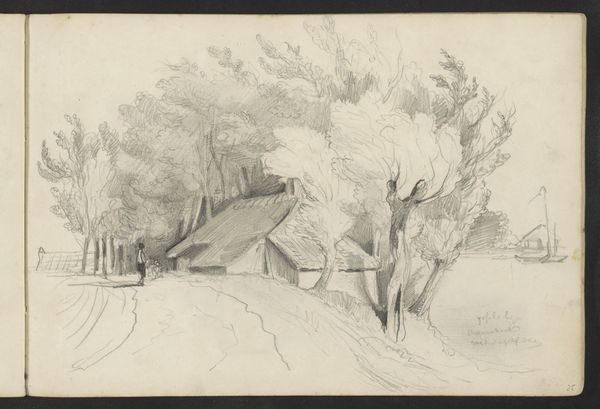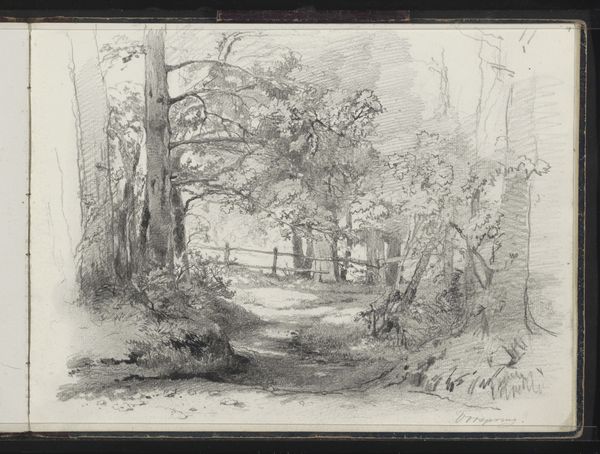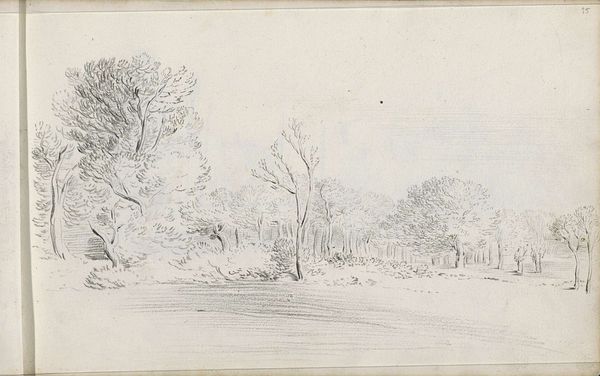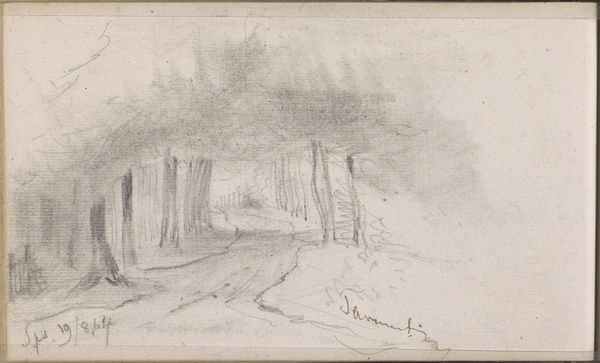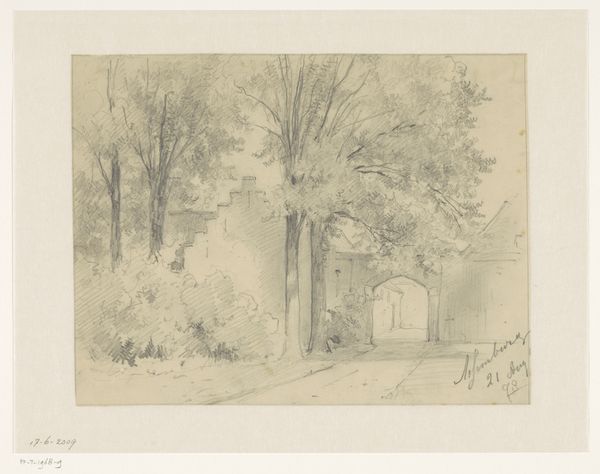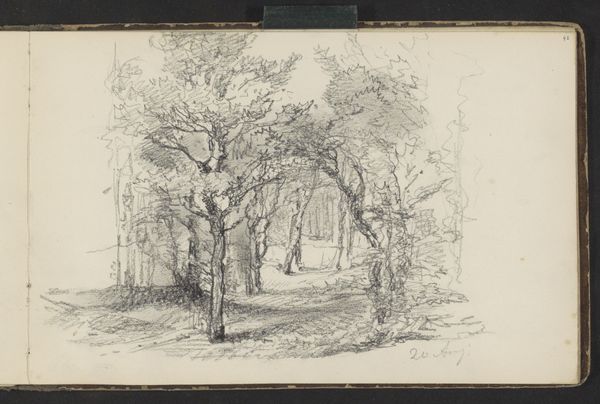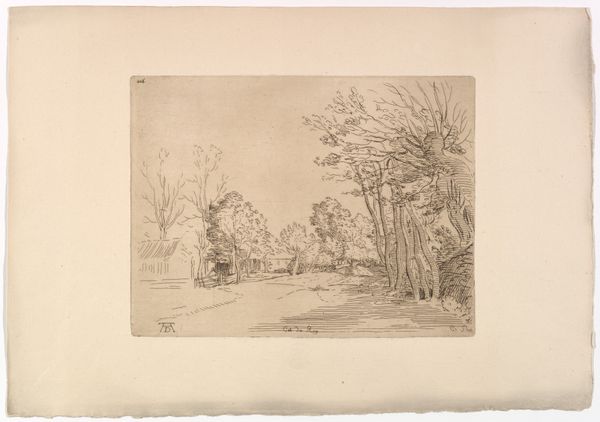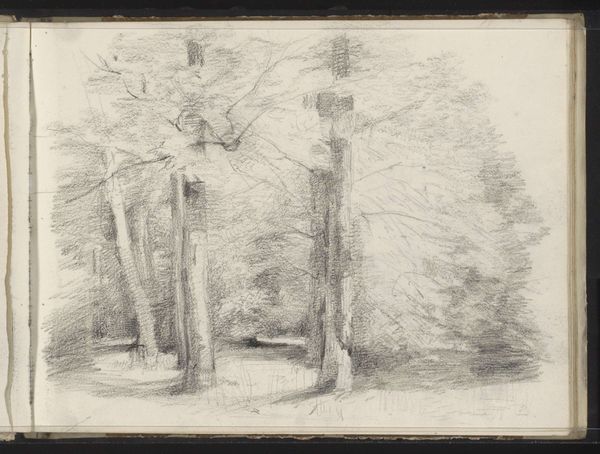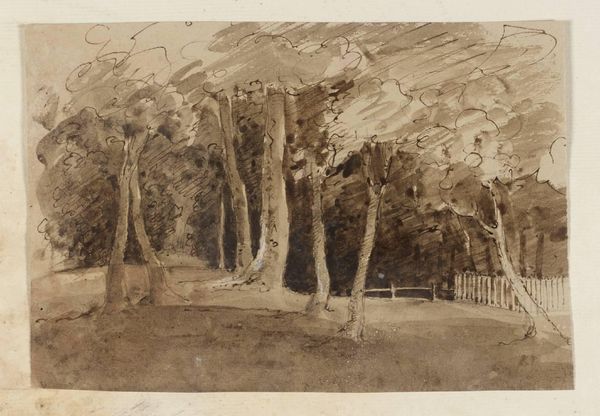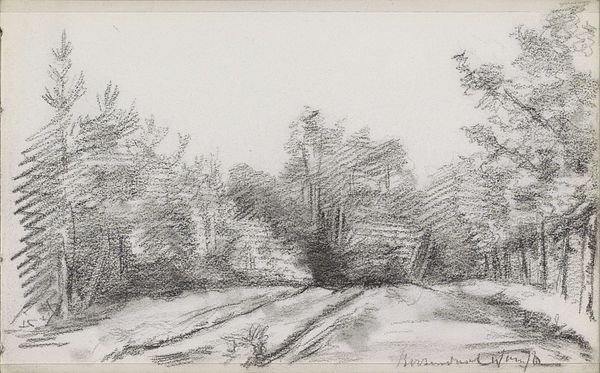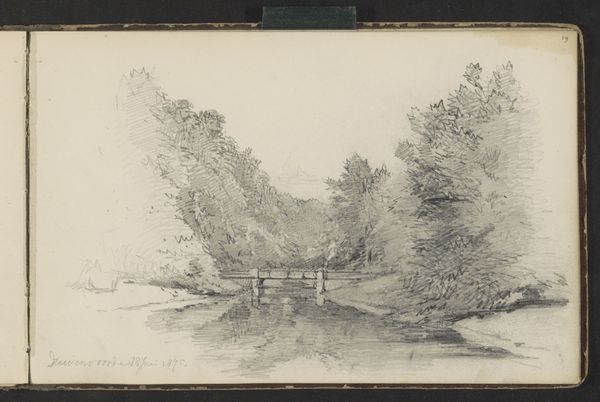
Copyright: Rijks Museum: Open Domain
Editor: This is "Laan in het Amerongse Bos" made around 1868-1869 by Johannes Tavenraat. It's a pencil drawing on paper. It has a wonderfully light and airy feel. What can you tell me about it? Curator: Consider the ready availability of pencils and paper versus paints and canvas at this time. It lowers the barrier to entry for artists and even hobbyists, doesn't it? Observe the casual quality, a 'quick sketch' feel. Think about what it says about the relationship between artistic creation and leisure, the burgeoning middle class finding new ways to interact with and represent their environment. Editor: So you’re saying the materials used shape the very kind of art produced? It wouldn’t exist if paints had been readily available instead? Curator: Not necessarily *wouldn’t* exist, but its very character – the impressionistic rendering, the 'captured moment' – that stems from its practicality, wouldn’t you agree? Also, examine the role of paper, manufactured for wider consumption: what impact might the Industrial Revolution's mechanization have on an artist's practice, who once needed to grind their pigments, prepare supports? This newfound immediacy encourages a different mode of seeing, a democratic embrace of landscape as a subject for anyone to observe and record. Editor: That makes so much sense! It changes how I look at landscapes. Curator: And hopefully encourages you to think about art not as existing in a vacuum, but as reflecting very concrete production realities. Editor: I will certainly do that. Thank you for shining a new light on the context of this drawing. Curator: My pleasure! Always consider the material conditions, for they dictate, inspire, and constrain in equal measure.
Comments
No comments
Be the first to comment and join the conversation on the ultimate creative platform.
